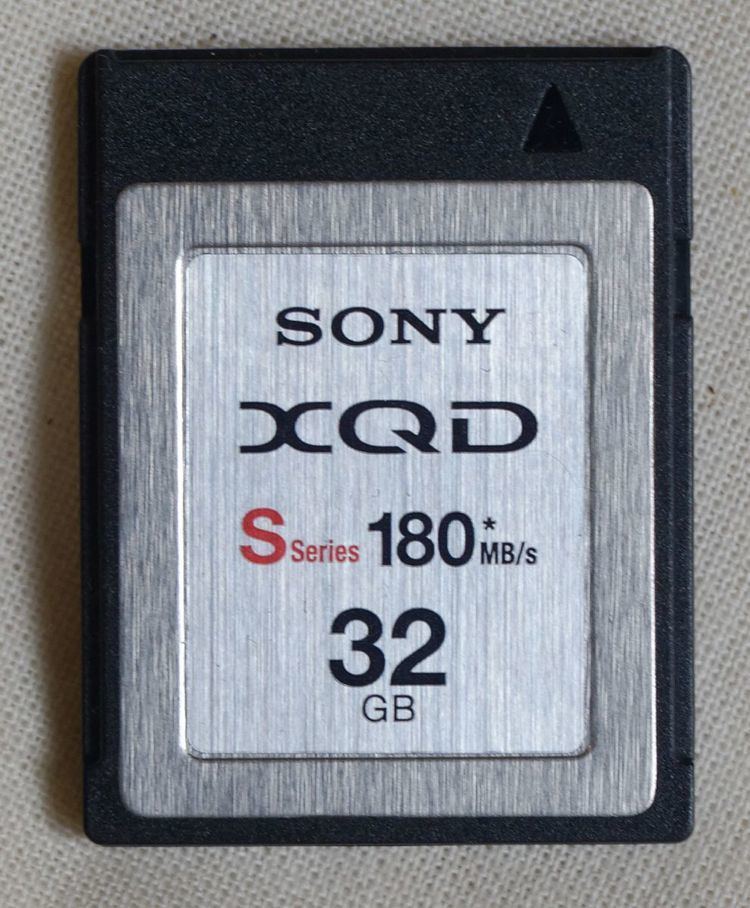Capacity Over 2 TB | ||
 | ||
Dimensions 38.5 mm × 29.8 mm × 3.8 mm | ||
XQD card is a memory card format primarily developed for flash memory cards. It uses PCI Express as a data transfer interface.
Contents
The new format is targeted at high-definition camcorders and high-resolution digital cameras. It offers target read and write speeds from 1 Gbit/s (125 Mbyte/s) to about 4 Gbit/s (500 Mbytes/s) and storage capabilities beyond 2 TB.
The cards are not backward compatible with CompactFlash or CFast cards. XQD and CFast were both designed as a replacement of the then-16-year-old (in 2010) CompactFlash standard.
The format was first announced in November 2010 by SanDisk, Sony and Nikon, and was immediately picked up by the CompactFlash Association for development. The final specification was announced in December 2011.
XQD version 2.0 was announced in June 2012, featuring support for PCI Express 3.0 with transfer rates up to 8 Gbit/s (1000 Mbyte/s).
Availability
In January 2012, the first XQD card was announced by Sony, declaring a 1 Gbit/s read and write speed. In July 2012, Lexar announced plans to support the XQD format. Currently, Sandisk and Kingston have not announced plans to produce XQD cards.
Hosts
Sony has said their broadcast camcorders (XDCAM and XDCAM EX) will support the XQD cards. For their broadcast products the XQD card will be classified as a secondary media as XQD is based around consumer technology. Nonetheless, the cards will support acquisition in the broadcast quality MPEG HD422 50 Mbit/s format. On 4 September 2013, Sony released the PXW-Z100, a 4K prosumer camera that records onto XQD cards.
Nikon supports XQD cards in its newer high-end DSLR cameras: Nikon D4, Nikon D4s, Nikon D5, and Nikon D500.
